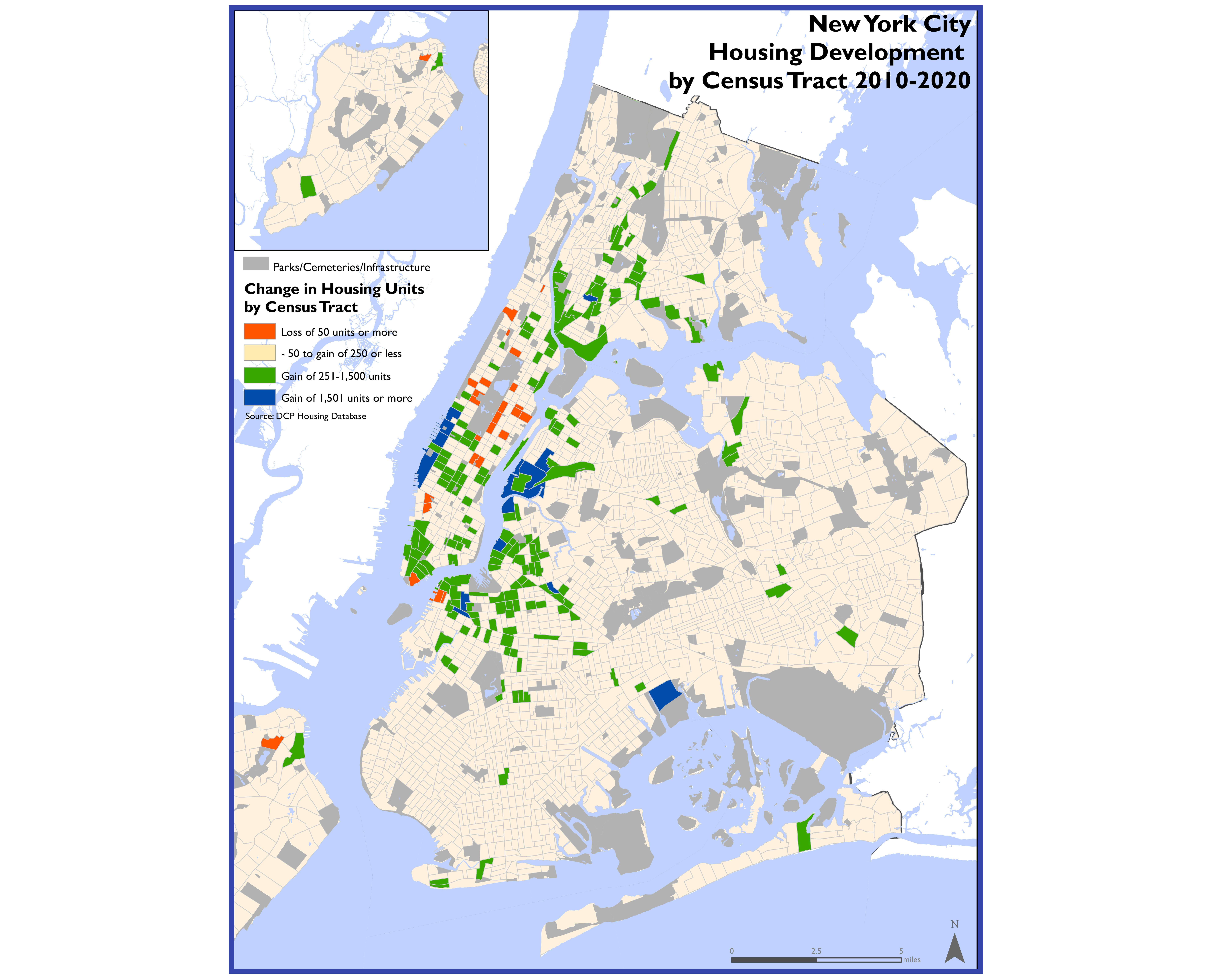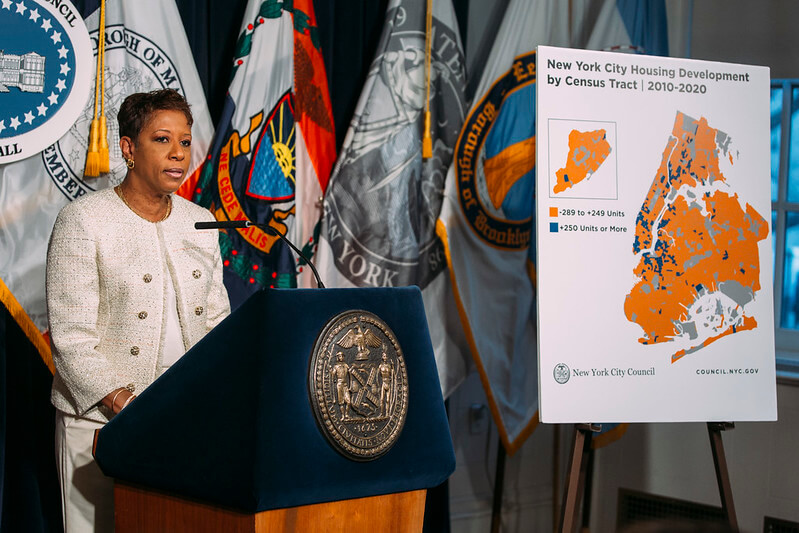New York City Council Unveils New Land Use and Housing Guidelines
The guidelines call for affordable housing to be aimed at low-income households and for the city to put an additional $4 billion into HPD and NYCHA.

City Council Speaker Adrienne Adams rolls out the council’s land use guidelines and housing agenda during a City Hall press conference Thursday, December 15, 2022.
A week after Mayor Eric Adams unveiled his plan to boost housing production across the five boroughs centered around cutting red tape, the City Council released guidelines for getting the most community benefits out of the land use application process and its own housing agenda focused on building more affordable units.
The Planning and Land Use Toolkit lists several items the council believes should be considered in each land use decision, such as: expanding engagement with communities, getting the most affordable housing out of each project, offering well-paying jobs to area residents and bettering open space and the streetscape.
The council’s housing agenda includes passing the Fair Housing Framework legislation, deepening housing affordability levels, preserving more affordable units, and increasing staffing and funding at city housing agencies. The latter include the Department of Housing Preservation and Development and the New York City Housing Authority, or NYCHA.
In a news conference announcing the plan at City Hall, City Council Speaker Adrienne Adams laid out the dire housing crisis the city is currently facing, where one third of New Yorkers spend half their income on rent and the demand for housing has far outpaced supply.
“It is no secret that New York faces a housing crisis,” the speaker said. “We have too few homes for New Yorkers, which disproportionately burdens those who truly need affordable housing.”

Speaker Adams said the council is rolling out its housing agenda and land use application guidelines in tandem because both are needed to truly tackle the housing crisis.
“Today, I’m releasing my planning and land use guidelines with an application toolkit,” Speaker Adams said. “It gives council members, community stakeholders, land use applicants and the city a set of principles and tools to advance successful development projects. Simultaneously, I’m releasing my housing agenda, which is a step towards addressing this housing crisis. These are being released together because to best address the housing crisis, we need both sound housing policies and an improved planning and land use process.”
While the council and the administration are vying to tackle the same issue, in releasing his plan, the mayor put far more emphasis on cutting down on the city’s bureaucracy to maximize overall housing construction – with a goal of building 500,000 new units over the next decade.
The plan contains 111 proposals for how to move projects along as quickly as possible, including eliminating the environmental review process for projects under 200 units and shortening the pre-certification period required before developments move through the Uniform Land Use Review Procedure (ULURP).
The council’s land use application tool kit, however, focuses on ramping up the amount of community engagement, which could ultimately lengthen the time it takes projects to move through ULURP. That includes reviewing existing plans and priorities for communities as well as reaching out to local stakeholders during the pre-certification period, according to the toolkit document.
“A crucial component to achieving this is community engagement, which must be expanded through participation and input from diverse stakeholders at the neighborhood level and frequency, depth and inclusivity,” the speaker said.
Additionally, the toolkit calls for striving to achieve as high of a percentage of affordable units in developments as possible, if 100 percent affordability can’t be achieved. And it stipulates that projects should provide well-paying construction and building maintenance jobs that benefit people in the surrounding neighborhood.

The Fair Housing Framework legislation the council hopes to pass would require that specific benchmarks be set for housing production in each community district across the city based on that area’s specific needs. The speaker said the legislation would require the city’s more well-off neighborhoods to share some of the burden for affordable housing development; however, she declined to cite specific examples when pressed by a reporter.
“This would direct highly resourced neighborhoods with good access to jobs, schools and public transportation to contribute to affordable housing development,” she said. But “it really isn’t about singling out any neighborhood. It’s really about the recognition of all of us having to do our part as a city to actually get a handle on this crisis.”
It also calls for the council playing an active role in shaping Mayor Adams’ Zoning for Housing Opportunity text amendment, which is intended to eliminate obstacles to development in “high opportunity” neighborhoods.
The housing agenda additionally states the council should advocate for HPD to set higher citywide targets for producing deeply affordable housing – units affordable for those making 30 percent to 50 percent of the Area Median Income (AMI). It also calls for the administration to put an additional $1.5 billion into affordable housing production each year, which would amount to a total of $2.5 billion for HPD and $1.5 billion for NYCHA.
“All of this requires that city agencies responsible for planning, housing production, preservation and tenant protection have adequate resources,” the speaker said. “The council will continue advocating for the funding needed to get New Yorkers into housing.”
Editor’s note: A version of this story originally ran in amNY. Click here to see the original story.
Related Stories
- Preservationists Protest Demolition of Landmarked Buildings Across City
- Locals Reject Bigger Highway in Three Green Space-Wrapped Designs to Replace Crumbling BQE
- ‘All I’m Asking Is for a Normal Life,’ Crown Heights Tenant Pleads in Harassment Trial
Email tips@brownstoner.com with further comments, questions or tips. Follow Brownstoner on Twitter and Instagram, and like us on Facebook.









What's Your Take? Leave a Comment